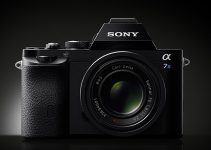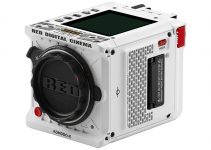The fact that we could even be comparing a $5,995 camera like the RED Komodo to a $35,000 monster of a camera like the RED Epic-W speaks volumes about how the Komodo is an inflection point for professional, high-end cinematography. Both of these cameras share quality and consistency that is unrivaled by other camera manufacturers while still having their own unique advantages over one another.
There are things that the Komodo can do that the Epic-W just can’t, and there are many things that the Epic-W can do that wouldn’t be possible for a camera like the Komodo just yet. These cameras weren’t designed to compete with one another, they were built to work together.
But is the Komodo a ‘baby RED’ camera that can completely replace an Epic-W for certain shoots, or is it only worthy to tag along as a b-camera? Putting the two side-by-side, Nick Sales gives us his take on the new guy in town!
We’ve all been using DSLRs and Mirrorless cameras for professional shooting for a decade now, but the high-end industry with demanding specs has never fully embraced a small camera body until the release of the RED Komodo.
Unlike the rest of the box cameras on the market, the Komodo is really just a miniaturized RED camera. It’s chief purpose is to provide the high-end cinema world with a camera body that can mount anywhere while staying in the RED ecosystem. This is not a standalone camera, it is part of a family.
So how does it compare to its big brother?
RED Epic-W Key Features
- 8K Super-35 CMOS Sensor
- Standard, Low Light, and Skin Tone OLPFs
- 8192 x 4320 Recording up to 30 fps
- REDCODE RAW, ProRes, and DNx Recording
- Price: $35,000
RED Komodo Key Features
- 19.9MP Super35 Global Shutter CMOS
- Compact All-in-One Design; Weighs 2.1 lb
- Canon RF Mount; 16+ Stops Dynamic Range
- Up to 6K40, 5K48, 4K60 & 2K120 Recording
- Price: $5,995
Resolution
The Epic-W wins hands down in sheer image size since it shoots 8K footage and the Komodo only shoots in 6K. However, most clients are just starting to require 4K deliveries for projects so shooting in 6K or 8K is largely overkill.
The Komodo also shoots at up to 40fps in it’s full 6K resolution, and the Epic-W can only film up to 30fps in full 8K meaning that you’ll need to crop in the sensor if you need to shoot any slow-motion on the Epic-W.
Lowlight
Shooting the exact same scene at 3200 iso, there is a fairly noticeable green shift to the footage from the Komodo but the Epic-W remains very clean with little to no color shift at all.
Both cameras expose images best at 800 iso for the best color and dynamic range, but although it is certainly useable at 3200 ISO, Nick doesn’t recommend shooting over 1600 iso with the Komodo. The image certainly doesn’t fall apart, but it would require some additional treatment in post.
It is important to note here that the Komodo uses a sensor with a global shutter whereas the Epic-W implements a rolling shutter. Global shutters aren’t known for their low light capabilities so being able to stay this close to the Epic-W in lowlight conditions shows how advanced this little camera really is!
Boot-Up Time
If you have never shot with a RED camera before you wouldn’t know it, but RED cameras are notoriously slow starters – they take forever to boot compare to your standard, instant-on DSLR or Mirrorless camera.
The Epic-W has a painfully slow 36 second boot time, and although it may not seem like it but with a 21 second boot time, the Komodo completely clobbers the Epic-W in this category.
Hopefully this is a sign that RED is investing some real R&D time into getting those start-ups sped up.
Color Science & Dynamic Range
Side-by-side, there is no discernible difference between the color science or the dynamic range of the RED Komodo and the RED Epic-W. Footage from the two cameras should cut together seamlessly and make color grading a breeze.
This is fantastic news since the intended purpose of the Komodo was to make a camera that fits perfectly into the existing RED ecosystem. They have clearly done it, maintaining the fantastic RED look in the tiny Komodo. Neither camera loses these categories, they’re both winners.
Size & Weight
The RED Komodo is nearly half of the size of the Epic-W in depth and height, and essentially the same width while weighing in at less than a 1/2 as much.
The camera will obviously put on a few pounds as you start to assemble your rig, but you can definitely expect to save at the chiropractor’s office not carrying around that spare tire.
The smaller size and weight let the Komodo fit in more places than the Epic-W while offering a comparable image.
Conclusion
You can’t really declare a winner between these two cameras. They’re well-matched where it counts (in raw recording, color science, and dynamic range) and the Komodo’s small size will make handheld work, gimbal shots, and creative rigging THAT much easier.
The Epic-W has better lowlight, slow motion options, and resolution. It also has the ability to shoot R3D and ProRes simultaneously which will speed things up in post. The Komodo can only film in either R3D or ProRes, separately and must reboot when switching between the too.
The Komodo has two fantastic features the Epic-W just can’t compete with – autofocus, and wireless controls and wireless video built-in. It can also startup faster, and has a microphone input.
These two cameras work well together and can be used interchangeably where the situation calls for it. The professional, high-end cinema world now has its first compact camera that doesn’t compromise on results.
[source: Nick Sales]
Order Links:
KOMODO 6K Digital Cinema Camera (B&H)
RED Epic-W with HELIUM 8K S35 Sensor (B&H)
Disclaimer: As an Amazon Associate partner and participant in B&H and Adorama Affiliate programmes, we earn a small comission from each purchase made through the affiliate links listed above at no additional cost to you.



